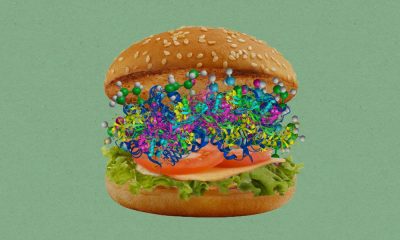With more than 30 million people infected and 550,000 dead, the U.S. is among the nations hardest hit by the COVID-19 pandemic. From job loss to housing insecurity to mental distress, the social, psychological and economic hardships brought on by the pandemic are extensive and likely to outlast the pandemic itself.
To better understand the breadth and depth of the pandemic’s impact on American lives, I worked with colleagues at the USC Dornsife Center for Economic and Social Research to develop an index of “pandemic misery.” We found that though few U.S. residents have survived the pandemic unscathed, hardship isn’t equally distributed across groups.
Just how bad it was: 80% experienced a hardship
The U.S. Pandemic Misery Index uses data we have collected through the Understanding Coronavirus in America Study, the only nationally representative survey since the start of the pandemic tracking its impact on U.S. residents. This internet-based panel of about 6,000 adults aimed to quantify the serious hardships people have experienced over the course of the pandemic, and to assess the distribution of those experiences across the U.S. adult population.
The index draws on nine indicators of pandemic-related hardship: financial insecurity, food insecurity, symptoms of moderate or severe psychological distress, symptoms of high stress, job loss since March 2020, experience of COVID-19-based discrimination, missing a housing payment, being put in isolation or quarantine, and a COVID-19 diagnosis or perceived COVID-19 infection.
According to the index, 80% of U.S. adults experienced at least one serious economic, psychological or health hardship between April 2020 and March 2021. Among them, 48% experienced financial insecurity, 29% faced food insecurity and 18% missed a housing payment.
Pandemic misery has declined over time
While few in the U.S. remain unscathed by the pandemic, our index shows that the prevalence of U.S. adults experiencing a serious hardship at any given point in time declined by 22 percentage points, from 50% in April 2020 to 28% in March 2021. Some of the biggest declines occurred in the prevalence of financial insecurity, food insecurity, psychological distress, COVID-19-based discrimination and experiences of isolation or quarantine.
For example, the share of adults facing food insecurity dropped from 18% in April 2020 to 7% in March 2021. Similarly, the percentage of adults experiencing moderate to severe psychological distress declined from 16% in April 2020 to 10% in March 2021.
Blacks and Latinos more likely to know someone who died
The pandemic exacerbated racial and ethnic disparities in health and financial security. According to our index, racial and ethnic disparities appear largely unchanged a year into the pandemic.
While most U.S. adults have suffered in some way as a result of the pandemic, Latino and Black residents have clearly been hit the hardest. Almost 9 in 10 Latinos (89%) and 86% of Black people have faced at least one serious hardship since the start of the pandemic, compared to 80% of Asians and 76% of whites.
Furthermore, despite a decline in the prevalence of hardship across racial and ethnic groups, Latino and Black residents continue to face hardship at a higher rate than white and Asian residents. For example, 63% of Latino residents reported one or more hardships compared to 46% of white residents in April 2020, a 27 percentage point gap. This gap persisted in March 2021 at 24 percentage points, with 34% of Latinos and 26% of whites reporting one or more hardships.
The disparity between Asians and whites has largely disappeared over the course of the pandemic due to a marked decline in the prevalence of hardship among Asians. While 50% of Asians reported one or more hardships in April 2020, 23% reported a hardship in March 2021.
Asians were also much less likely to report a COVID-19 infection themselves or in their social circle. Since April 2020, 61% of Asians reported knowing at least one person infected with COVID-19, compared to 78% of Latinos, 77% of whites and 70% of Blacks. Nonetheless, Asians have experienced COVID-19-based discrimination – that is, mistreatment due to others thinking they might be infected with COVID-19 – at a higher rate than other racial or ethnic groups.
Additionally, we see large racial and ethnic disparities in the share of U.S. adults who have suffered the loss of someone due to COVID-19. Blacks and Latinos are nearly twice as likely as whites and nearly three times as likely as Asians to report a friend or family member dying due to COVID-19 since April 2020.
Recovery will require sustained social and government support
While the share of U.S. adults experiencing serious hardships has declined markedly – from 5 in 10 during the early days of the pandemic to slightly less than 3 in 10 in late March 2021 – a key takeaway from our index is that many continue to face social, psychological and economic distress. More than 2 in 10 U.S. adults, or 23%, reported experiencing financial insecurity, 7% reported food insecurity and 6% reported missing a housing payment as recently as late March 2021.
[Get our best science, health and technology stories. Sign up for The Conversation’s science newsletter.]
The burden of pandemic misery also continues to fall disproportionately on communities of color. While our index shows that the gap has narrowed between whites and Asians, Latino and Black people continue to face hardship at higher rates and will likely face a more difficult path to recovery from the pandemic.
Altogether, these findings underscore the multidimensional nature of the pandemic’s impact on people’s lives. For many Americans, especially Black and Latino Americans, the path to pandemic recovery will require more than a vaccine appointment or a one-off stimulus check. It will require sustained financial assistance, food and housing assistance, and mental health support.
Kyla Thomas, Sociologist, USC Dornsife College of Letters, Arts and Sciences
This article is republished from The Conversation under a Creative Commons license. Read the original article.
















